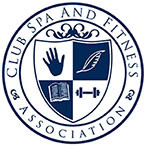Why Fitness Trainers Need First Aid Certifications
Many fitness facilities require instructors to have CPR (cardio-pulmonary resuscitation), AED (automated external defibrillator) and/or first aid certification. They’re even a requirement for many fitness certifications. Even if no one is requiring you to have comprehensive first aid certifications, it’s a good idea for every fitness professional to take this training and get certified through the American Heart Association, the American Red Cross, the National Safety Council or another similar group.
The reality is that you never know when someone might experience a life-threatening emergency before, during or after exercising with you. Even someone who appears fit might have a health condition that can lead to a heart attack or cardiac arrest.
Whether you’re at your workout facility, at home, or out and about, you may be the only one available to step up and perform life-saving first aid during a crisis. Here are some eye-opening statistics from the American Heart Association and the National Safety Council.
- Nearly 383,000 out-of-hospital sudden cardiac arrests occur annually, and 88 percent of cardiac arrests occur at home.
- Many victims appear healthy with no known heart disease or other risk factors.
- Effective bystander CPR provided immediately after sudden cardiac arrest can double or triple a victim’s chance of survival, but only 32 percent of cardiac arrest victims get CPR from a bystander.
- 25% of all emergency room visits can be avoided with basic first aid and CPR certification.
As you can see, CPR, AED and first aid training promote valuable skills for pretty much anyone. The added risks associated with exercise mean that fitness trainers are particularly strong candidates for getting and maintaining this vital certification.
Customer Feedback
-
Thank you so much for your prompt response. Might I add, Veronica was a delight to work with and her professionalism and attention to detail made this an overall pleasurable experience.

Earl W.




















